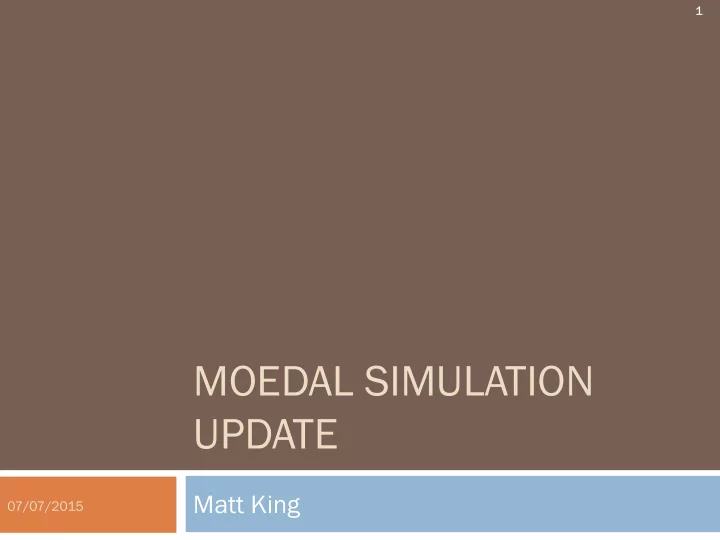

1 MOEDAL SIMULATION UPDATE Matt King 07/07/2015
Region Finding 2 Have been working on an automated fiducial region finding algorithm for the MMTs With assistance from Katarina Bendtz, who designed the algorithm for ATLAS. Our situation is a little different from ATLAS Two distinct regions (main MMT box, box top) No full coverage in eta Don’t need the other analysis code in which the region finder is embedded => Have been working on a new algorithm “inspired” by the ATLAS one 07/07/2015 Matthew King, IFIC
The algorithm 3 The basic idea of the algorithm is to find the largest possible region, inside a mother-region, that meets some criteria. Algorithm *always* finds the largest possible region, not an approximation. Current criteria is: Average efficiency in region > effmin More advanced selection, optimization of a function is also possible Requires more study. A simple selection seems sufficient for now. 07/07/2015 Matthew King, IFIC
Initial results 4 Several obvious tuning parameters: Region size limit Region efficiency limit Region efficiency standard deviation limit (ignoring for now) Region size: theta * KEz( MeV) Efficiency*3 (because of phi coverage) 07/07/2015 Matthew King, IFIC
“Best” regions 5 effmin = 0.4 effmin = 0.5 effmin = 0.6 effmin = 0.7 07/07/2015 Matthew King, IFIC
Geant4 steps 6 Have looked further into the problem of large numbers of Geant4 steps. “Remove air” solution: Works, but number of steps in other materials is still large for other materials. Solves the immediate problem, but may run into problems later. Increase “ thePILfactor ”: Experimental (undocumented) Geant4 feature that manually multiplies the step length by some factor. Works, does not affect continuous energy loss but effectively reduces effect of secondaries by the factor (in all materials). Observed to be a lesser effect than the continuous energy loss, but not a rigorous solution. 07/07/2015 Matthew King, IFIC
Geant4 steps 7 “Correct” solution. There are two possible approaches to an energy loss algorithm: PostStepDoIt (current): computes a step based on the mean free path, does secondaries at the end of every step. AlongStepDoIt (target): much larger step length, secondaries generated along the length of the step. Some success in getting this to work. Still needs much more work though. Not trivial to make this change. 07/07/2015 Matthew King, IFIC
Recommend
More recommend